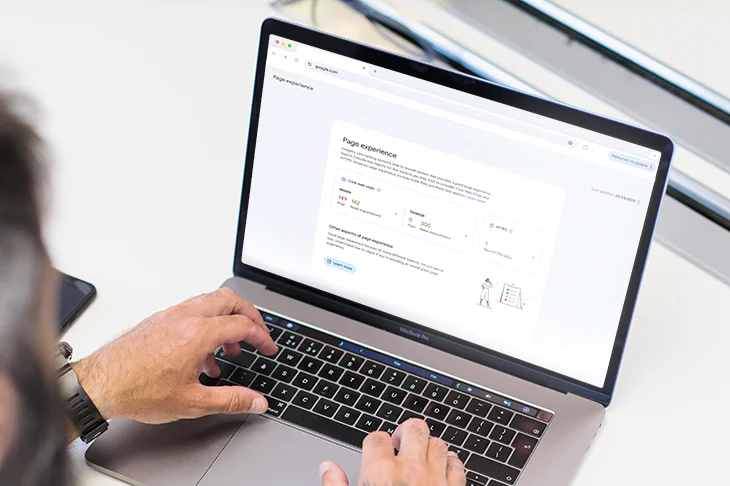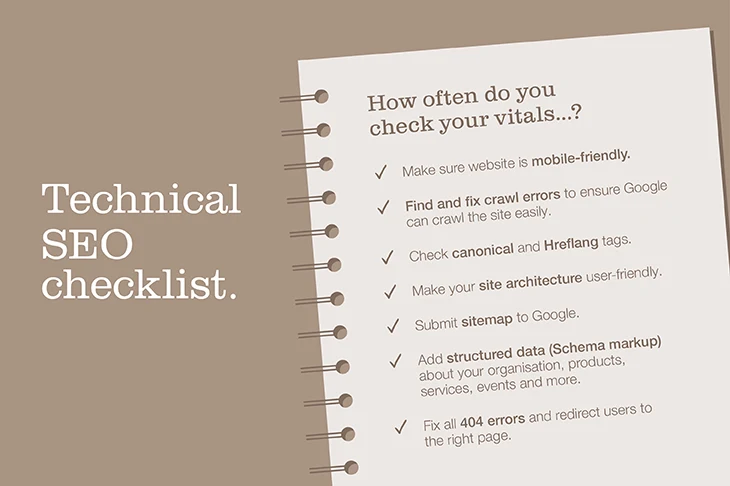- Digital Marketing
A guide to technical SEO.
A very warm welcome back to Joe Marsh, gracing our Views page once again with what he knows best – SEO. As our resident ‘techy’, Joe has put together a guide to technical SEO for B2B brands.

What is technical SEO?
Technical SEO is about improving the technical elements of a website to increase page rankings in search engines. That’s it, in a nutshell. Simple, right?
But what we must remember is that all the technical, architectural work of a website goes hand-in-hand with other things. On-page optimisation for one and the development of E-E-A-T content for another. Only by activating a multi-faceted SEO strategy will a website’s performance improve.
It’s important to remember that technical SEOs aren’t just thinking about how a website functions, the focus should be primarily on the user. To speak more plainly – we’re all about people, creating an experience that’s user friendly and functional from the jump. In 2024, SEOs and digital marketing in general have never been more vital and are steadily becoming the main foundation of B2B brand strategies. Which is fantastic to see!

Why is technical SEO important?
A lot of brands within the B2B arena are definitely on board with the importance of SEO. However, some holdouts still rely on legacy practices when it comes to their online presence and wider B2B content marketing campaigns in general.
To put it simply, technical SEO can make or break an SEO campaign. If your web pages aren’t accessible to search engines, Google will not rank them – even if the content is valuable! This means you will lose traffic to your website, lose potential leads and, ultimately, lose potential revenue.
Technical SEO Checklist.
So now we’ve established the importance of technical SEO, where do we begin when determining how well a site functions from a technical SEO perspective? Luckily for you, we’ve put together the ultimate checklist.

Address page speed:
In 2024 there is (almost) no excuse for a site to load slowly, which is why it’s a ranking factor for Google.
If your pages load slowly, users will get annoyed and leave your site. User behaviours like this signal to Google that your site doesn’t create a positive user experience and it will not rank your site well.
To find out how your page is performing, Google has a PageSpeed Insights tool that will give you a score. You’re aiming for a high number here, it’s not golf! You’ll find recommendations for your site in PageSpeed insights.
Mobile first:
Make sure your website is designed to be mobile-friendly. This is because Google ranks your site based on its performance on a mobile. To do so look at things take a look at PageSpeed index and see if your site is compatible on mobile devices.
Make it crawlable:
To rank in search engines, your site needs to be able to be crawled easily by search engines. So, fix and find crawl errors by looking in your Google Search Console to see what pages are, or aren’t, being indexed and why.
Check your canonicals:
There are times when you’ll have multiple pages on your site with similar content on. In these instances, Google doesn’t always know what to index and show in SERPs.
This is where canonical tags come in. They identify the link as the original or main version, and that this is the version you want to rank for. There is a caveat here, Google doesn’t always listen to these, but as SEO’s we still need to try.
Hreflang tags:
If you’re an international company, there’s a good chance you’ll have content in multiple languages. This is where hreflang tags come in. A hreflang tag is an HTML attribute that specifies the webpage language and geographical targeting and helps Google understand which version of your page should be shown to what users.
They need to be set up so that each language variant of the page is pointing to the other pages, as well as to themselves. If you’re unsure if your hreflang tags are working, try this checker.
Give Google a (site)map:
The way Google crawls sites by using bots to go through and understand the content on your site, how it links together and what your content is trying to say. So, to make it easier submit your sitemap to Google through Search Console.
Implement structured data:
One of the core aspects of technical SEO is about making Google (and other search engines) understand your site. This is where implementing structured data (schema markup) can help. You can do this to give information about your business, products, services, events and a lot more. There are over 30 types, so the world of search engines is your oyster here.
Fix the dreaded 404 errors:
As a user there isn’t much worse than clicking on a page only to be greeted by a 404 error. So, you need to find these and redirect users to the right page, or the closest equivalent.
What is a technical SEO audit?
Now that we’ve covered what makes up technical SEO, you might be wondering where you should start. We would recommend an audit. But what is a technical SEO audit?
A technical SEO audit will explore all the backend and functional processes of a website.
Firstly, crawl the website to highlight any issues that may be present. From there you need to prioritise what needs to be fixed, and in what order. At Wyatt we use a numbered and red, amber, green system in combination. To give you an example, we tend to start with the pages that are not indexed (visible in search engines) and rectify this. Next, we will review all meta tags, these are the snippets that essentially tell Google what the individual page is about.
We will then review the sitemap to determine if the structure is logical based on user behaviour. When working with international businesses, we also review hreflang tags, which are imperative if you’re running a multi-country or multi-language site.

Technical SEO and on-page content.
Technical SEO foundations must be solid for all other content to work and achieve the desired objectives. If you’re trying to bring customers to your website, your on-page SEO must be of high quality, it must be optimised and brimming with engaging, high-quality content. Words, images, graphics, infographics, videos – the entire content toolbox.
This is where the technical and the creative work hand-in-hand to provide users with the best experience on your site, the ambition is to ensure they leave (or ideally action your CTA) with all the information they’re looking for on a fast, secure and structured website.
Another Google Update.
While we’ve covered (most) of what makes up the basics of technical SEO, the world of search is forever changing with Google updates. March brought with it two big changes to Google’s algorithm…
Replacing First Input Delay with Interaction to Next Paint
The first was a long-awaited change to its Core Web Vitals (CWV) with the introduction of ‘Interaction to Next Paint’. This replaces the First Input Delay metric that measured the responsiveness of webpages. The new update will enable Google to track how quickly users can interact with a page once the content is loaded. This is paramount for B2B brands, particularly those that look after quite large sites filled with technical information, product brochures and videos.
What this update has ignited is a new, charged desire to explore the UX of a site and in turn, better understand how visitors are navigating a website. Should they land on the homepage, are you confident that that next click will load immediately? If there is apprehension, it’s time to explore optimising the site and simplifying the user journey with a comprehensive site audit.
A surprising core algorithm update
As well as changes to CWV, Google did what it does best in March. Announce another unexpected core update… Like most of Google’s updates, March’s update was all about improving search result quality. It also introduced new spam policies.
This latest update aimed to reduce low-quality content appearing in SERPs by changing their ranking systems and builds on the efforts they’ve been making since 2022’s infamous helpful content update. A technical audit can help you identify pages with no value on your site, so you can avoid being penalised, leading to a loss of rankings and potential revenue.
Conclusion.
Staying on top of your technical SEO is vital for your website. By building solid technical foundations, you can activate successful SEO, content and communication strategies. However, as your website grows, new problems will pop up and without the tools and expertise to keep on top of it, you could find yourself behind your competition.